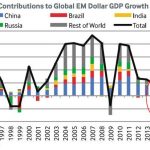
Microsoft (NASDAQ:MSFT) had lost the mobile wars before Satya Nadella became CEO. Windows Phone failed, and even the acquisition of Nokia had not turned things around. When it comes to mobile devices, Microsoft is not a player.
But he has a Plan B. Make enterprises see Microsoft’s Azure cloud as their only choice for connecting mobile devices to corporate resources, and bring decision-making to the field. That makes Xamarin the most important Microsoft acquisition of the last several years.
Xamarin provides a framework that lets developers write programs which work on Alphabet’s (NASDAQ:GOOGL) Android or Apple’s (NASDAQ:AAPL) iOS devices, which will now be linked to Microsoft’s own Azure cloud.
Many analysts consider this a game-changing acquisition but the game is ongoing. It comes just a few months after Amazon’s (NASDAQ:AMZN) purchase of NICE, and Oracle’s (NYSE:ORCL) acquisition of Ravello. All three deals are designed to create “lock-in” among enterprises for one particular cloud, turning infrastructure into platforms, and delivering services the cloud providers can profit from.
Forrester Research says the Xamarin deal creates a “comprehensive mobile development strategy” because it allows programmers to create a single program that runs on both iOS and Android devices.
But not everyone is thrilled with Microsoft’s choice of tool. Steven Vaughan-Nichols of ZDNet notes that at the heart of Xamarin is Mono, a failed attempt to clone Microsoft .Net as an open source framework. The idea – write it once, run it anywhere — is similar to that of Java, a Sun Microsystems language that promised the same thing in the 1990s. That didn’t work out and, Vaughan-Nichols fears, Mono as Xamarin won’t live up to the hype either.
When big players absorb software tools like Xamarin, or Ravello, or NICE, what matters most is what they are able to do after the acquisition, to fix the code base, adapt it to customer needs, and sign deals. Xamarin shows Microsoft is aiming in the right direction, but Vaughan-Nichols asks sound questions about whether the code can meet its promise, even under Nadella’s hand.













Leave A Comment